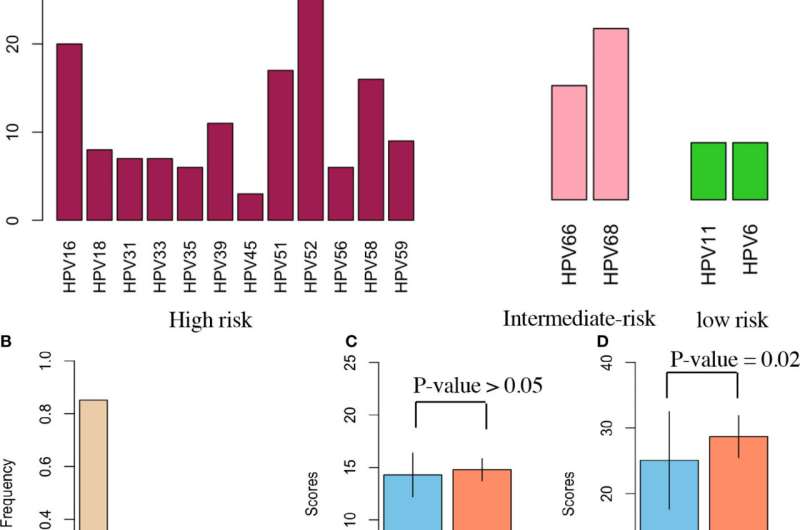This article has been reviewed according to Science X's editorial process and policies. Editors have highlighted the following attributes while ensuring the content's credibility:
fact-checked
proofread
Exercise and nutrition: A statistically significant combination against HPV infection

Human well-being has been linked to physical activity, diet balance, sleep quality, depression and anxiety. A new cross-sectional study co-authored by Dr. Yantao Li, BGI Genomics, published in Frontiers in Oncology, investigated the association between these lifestyle factors and the risk of human papillomavirus (HPV) infection.
HPV is a virus that can cause different types of cancer, including cervical cancer. Most HPV risk factor studies focus on sexual factors or gynecological infections in women. However, there are few cross-sectional studies that account for lifestyle factors and other current disease or disease history. Two lifestyle factors appeared to demonstrate significant association with HPV infection: physical activity and diet balance. Meanwhile, current disease or disease history are not significantly correlated with HPV infection.
A total of 495 women aged 18 to 59 years were recruited through a digital eHealth platform in Shenzhen, China, and were assessed for physical activity, diet balance, and HPV infection through questionnaires and HPV genotyping assay tests.
Lifestyle factors
Physical activity was evaluated using self-reported questionnaires, where participants were asked about their frequency and duration of physical activity in the past year. This data was then used to classify the participants into three levels of physical activity: low, moderate, and high. The high-activity group included women who reported engaging in more than 300 minutes of moderate-intensity or more than 150 minutes of vigorous-intensity physical activity per week.
As expected, patients with a high level of physical activity were less likely to be infected with HPV in comparison to participants with a low level of physical activity. This association was significant for P-values < 0.01 from univariate logistic regression, and P-values < 0.001 from multivariate logistic regression. This suggests that regular physical activity may have a protective effect against HPV infection.
Diet balance was assessed using a validated food frequency questionnaire. This data was used to calculate the dietary diversity score (DDS) for each participant, which is a measure of the variety of different food groups consumed. A higher DDS indicates a more balanced diet.
The study found that the prevalence of HPV infection was significantly lower in women with a higher DDS compared to women with a lower DDS. This suggests that a diet with a higher intake of fruits and vegetables and a lower intake of fat and sugar may have a protective effect against HPV infection.
Physical activity and diet balance among HPV serotypes
With regard to HPV serotypes, the prevalence of proportions involved 80.66% high-risk HPVs, 13.81% intermediate-risk HPVs and 5.52% low-risk HPVs. HPV 52 had the largest prevalence (19.89%) from the hrHPVs, followed by HPV16 (11.05%), HPV 51 (9.39%) and HPV 18 (4.42%).
Most HPV infections involved a sole HPV serotype (83%), and diet balance was the most significant difference between sole and multiple HPV infections. Therefore, the authors recommend two solutions for improving diet balance. Through this paper's questionnaires, one way is to ensure the appropriate consumption of dairy products and animal food products with vitamin A. Another way is to eat more fruits (e.g., tomatoes) or vegetables.
This study follows relevant regulations related to biological and medical research and has been approved by the BGI Ethics Committee and relevant ethics committees of research partners. The patients/participants provided their written informed consent to participate in this study.
More information: Yantao Li et al, The lifestyle factors of physical activity and diet balance associated with HPV infection in China: The cross-sectional study, Frontiers in Oncology (2022). DOI: 10.3389/fonc.2022.1043937


















